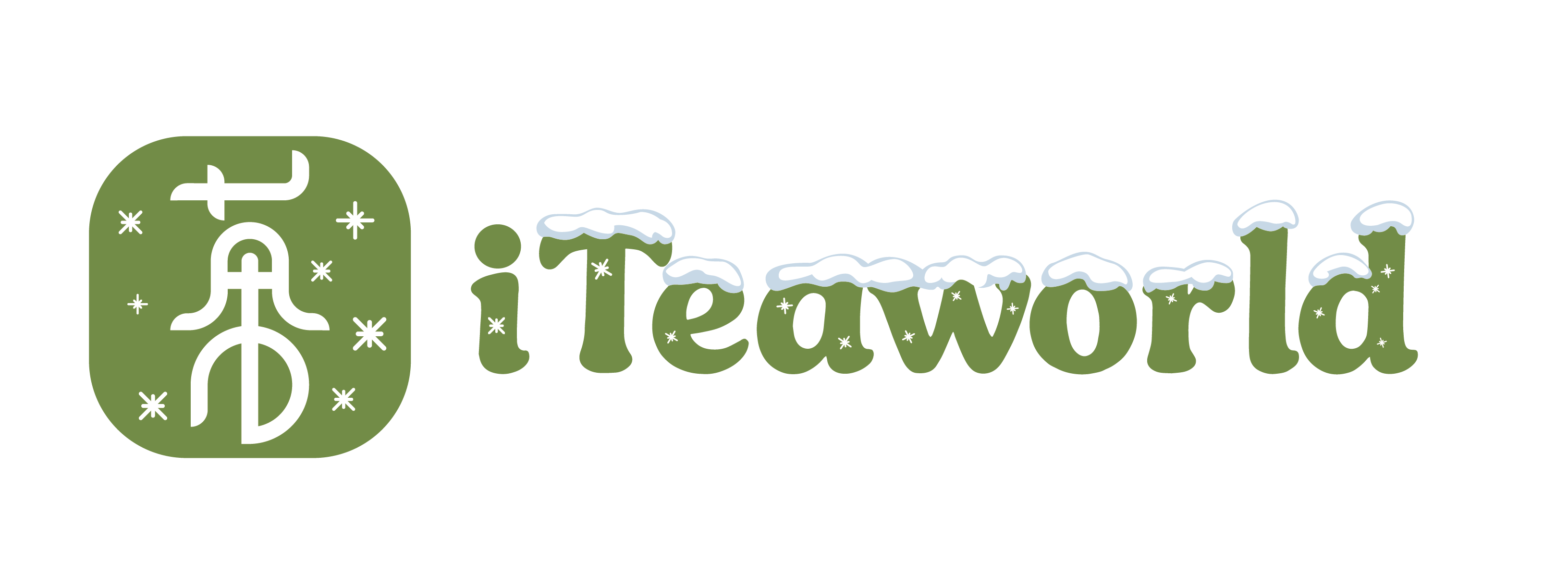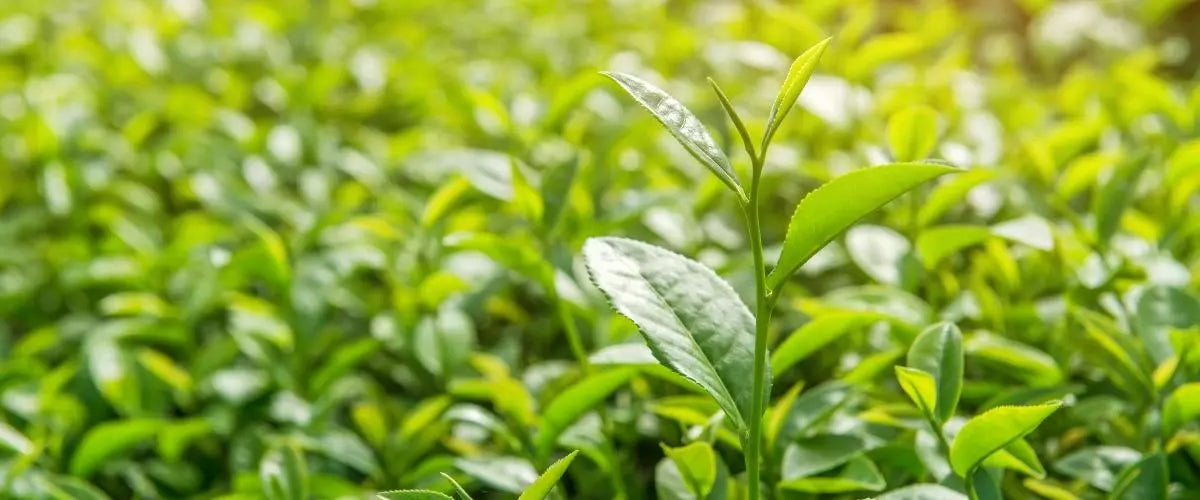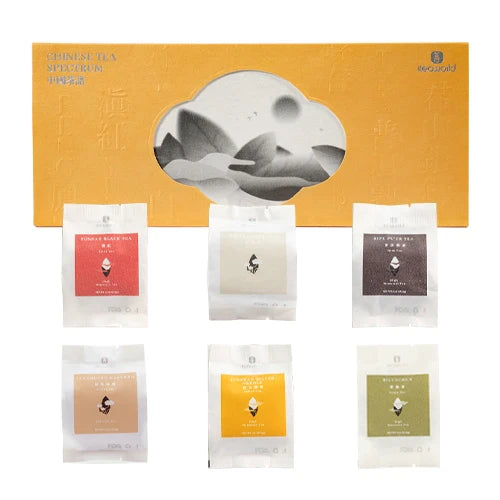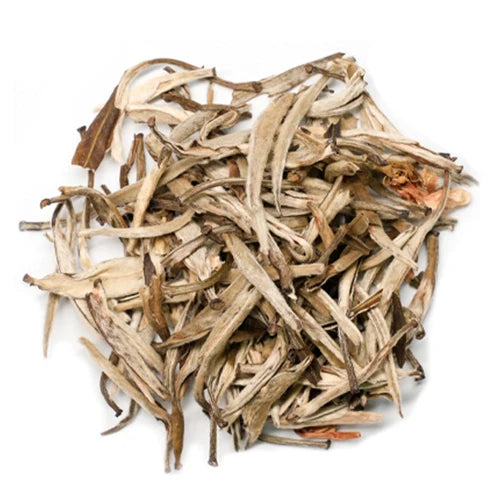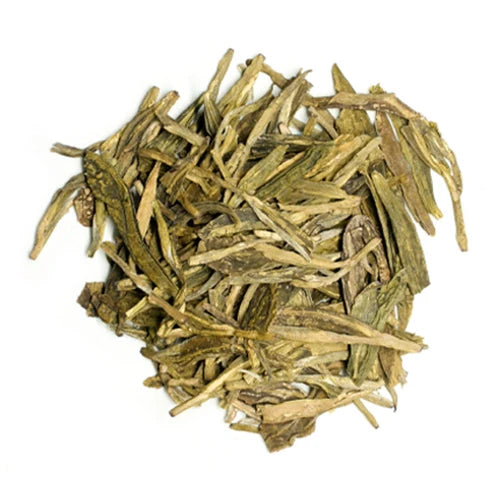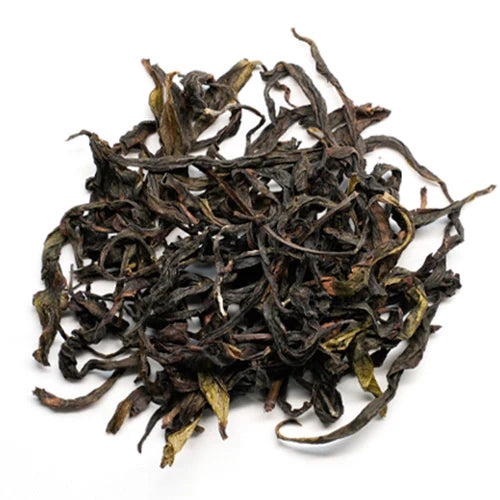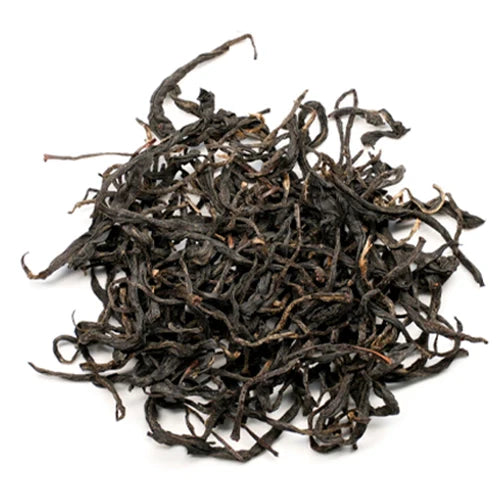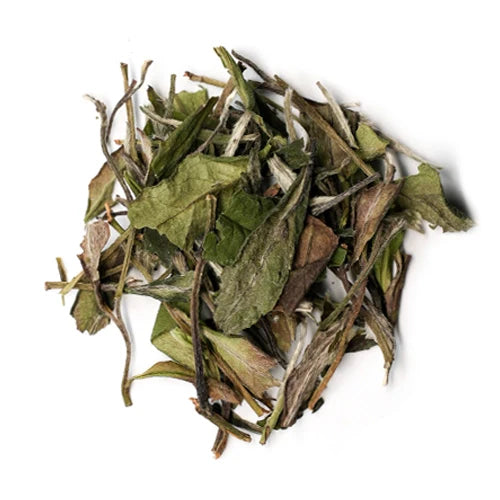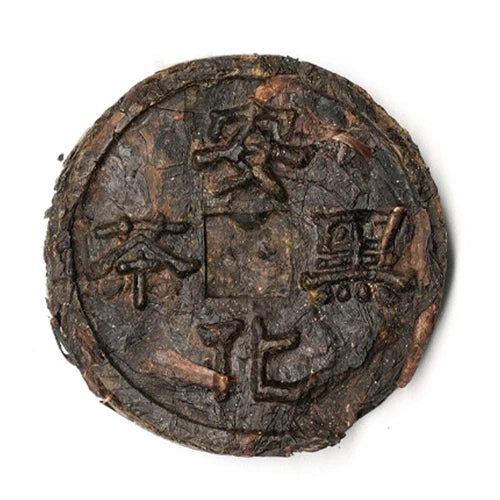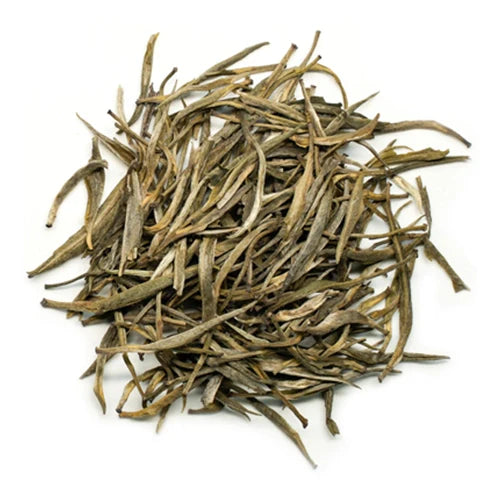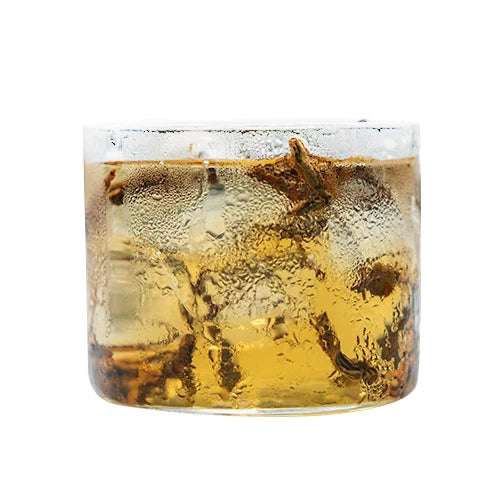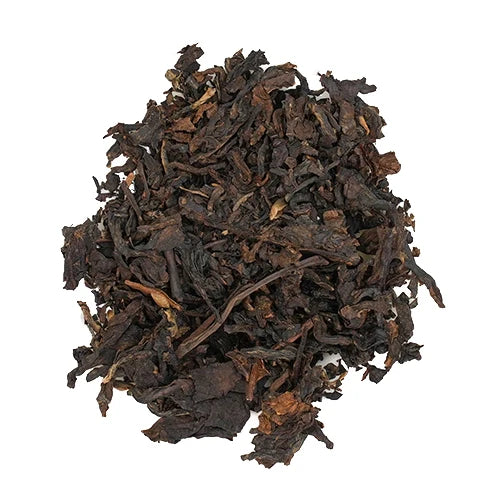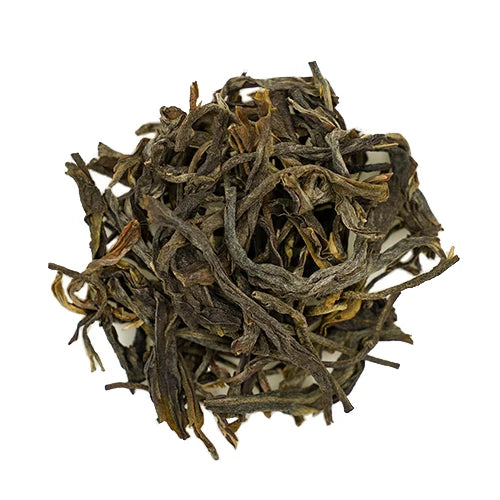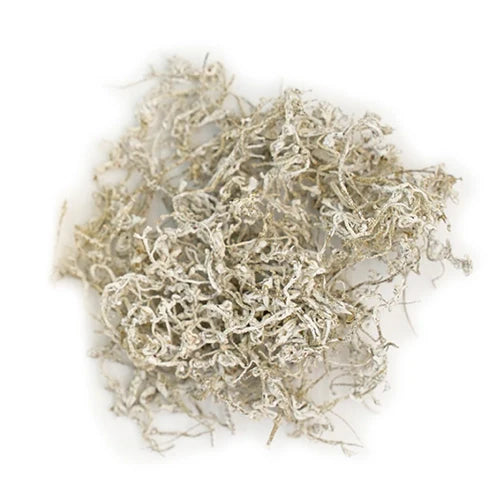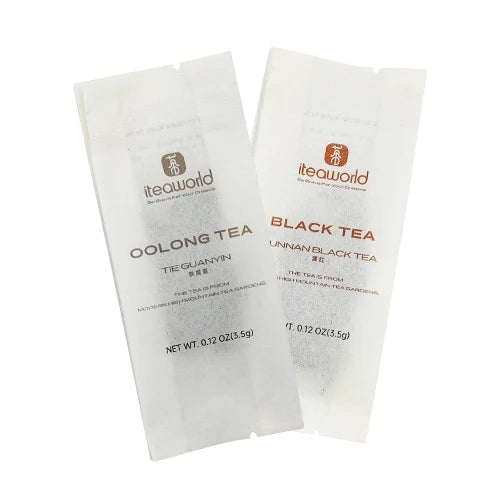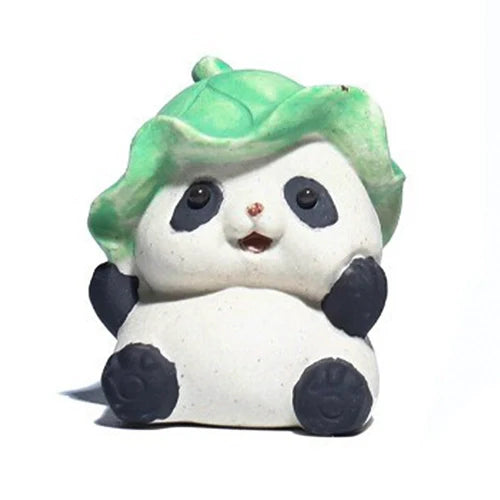Step 1 Start Your oolong journey: Top 10 classics for Beginners
If you’re new to Chinese oolong tea, I recommend starting with the most representative and famous varieties—at a minimal cost but with reliable quality. Good quality is essential, so that your first experience with oolong is enjoyable and authentic.
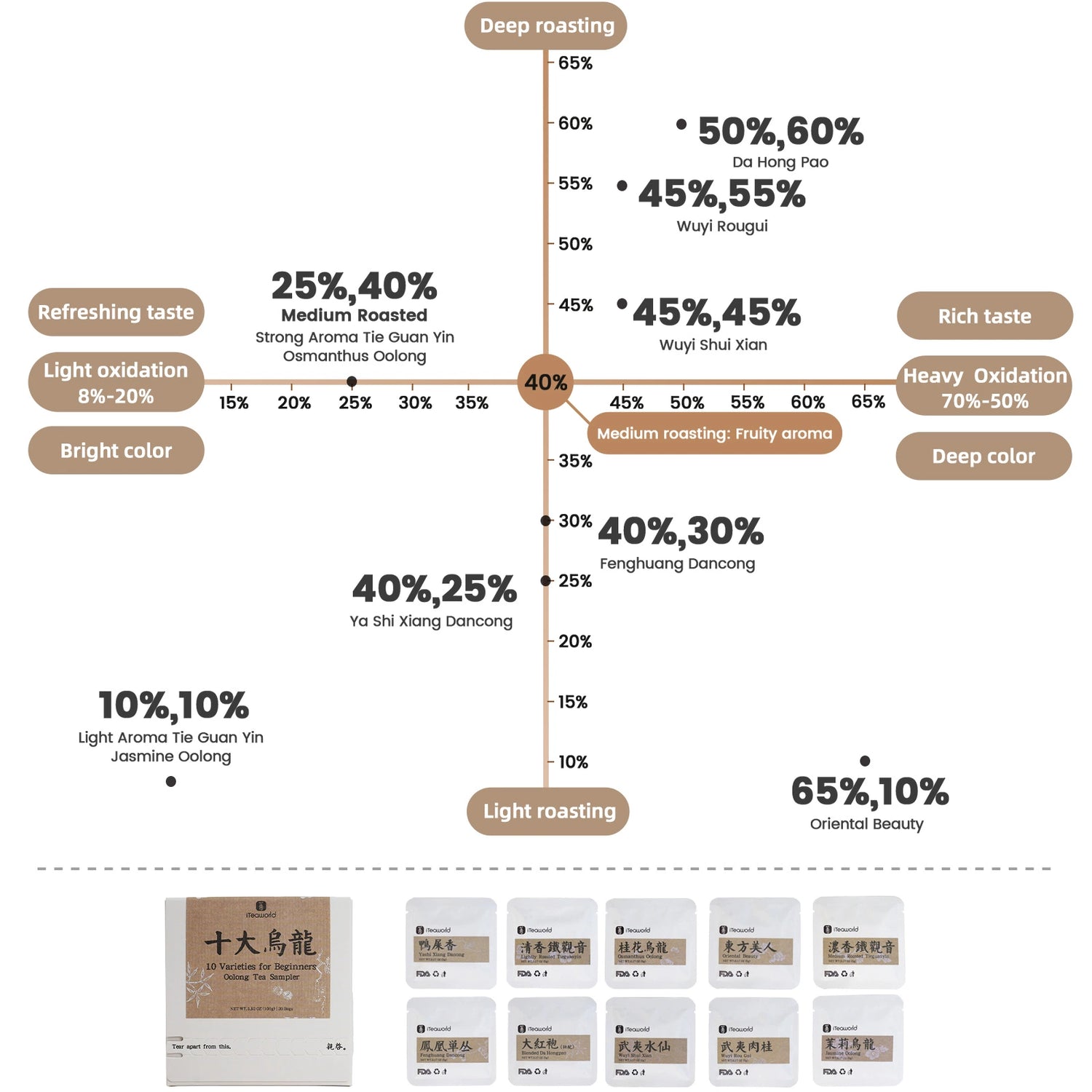

1.1 Start with China’s Top 10 Oolong Collection
The best way to begin is with this “Top 10 Oolong Collection.” It’s like a flavor map of Chinese oolong tea, giving you the chance to taste the most iconic styles in one set:
- Tie Guan Yin – China’s most famous oolong, available in both light and rich roasted styles.
- Da Hong Pao, Rou Gui, Shui Xian – Classic Wuyi Rock Teas, bold and mineral-rich.
- Ya Shi Xiang, Mi Lan Xiang – Fragrant oolongs from Phoenix Mountain in Guangdong.
- Osmanthus & Jasmine Oolong – Naturally scented floral teas with a gentle aroma.
This set lets you explore the main branches of Chinese oolong with minimal cost and maximum variety.
Step 2 Discover the Regions: Where Oolong is Born
Oolong tea is shaped by its birthplace. In China, four main regions define its character: Wuyi (Northern Fujian), Anxi & Yongchun (Southern Fujian), Chaozhou Phoenix Mountain (Guangdong), and Taiwan. From its 17th-century beginnings in Wuyi, oolong spread to Anxi, then to Guangdong, and by the late 18th century to Taiwan. Over time, each region developed its own craft and flavors, yet all remain connected through shared history. We’ve curated three regional collections (currently excluding Taiwan) to help you explore oolong’s origins and taste the differences for yourself..
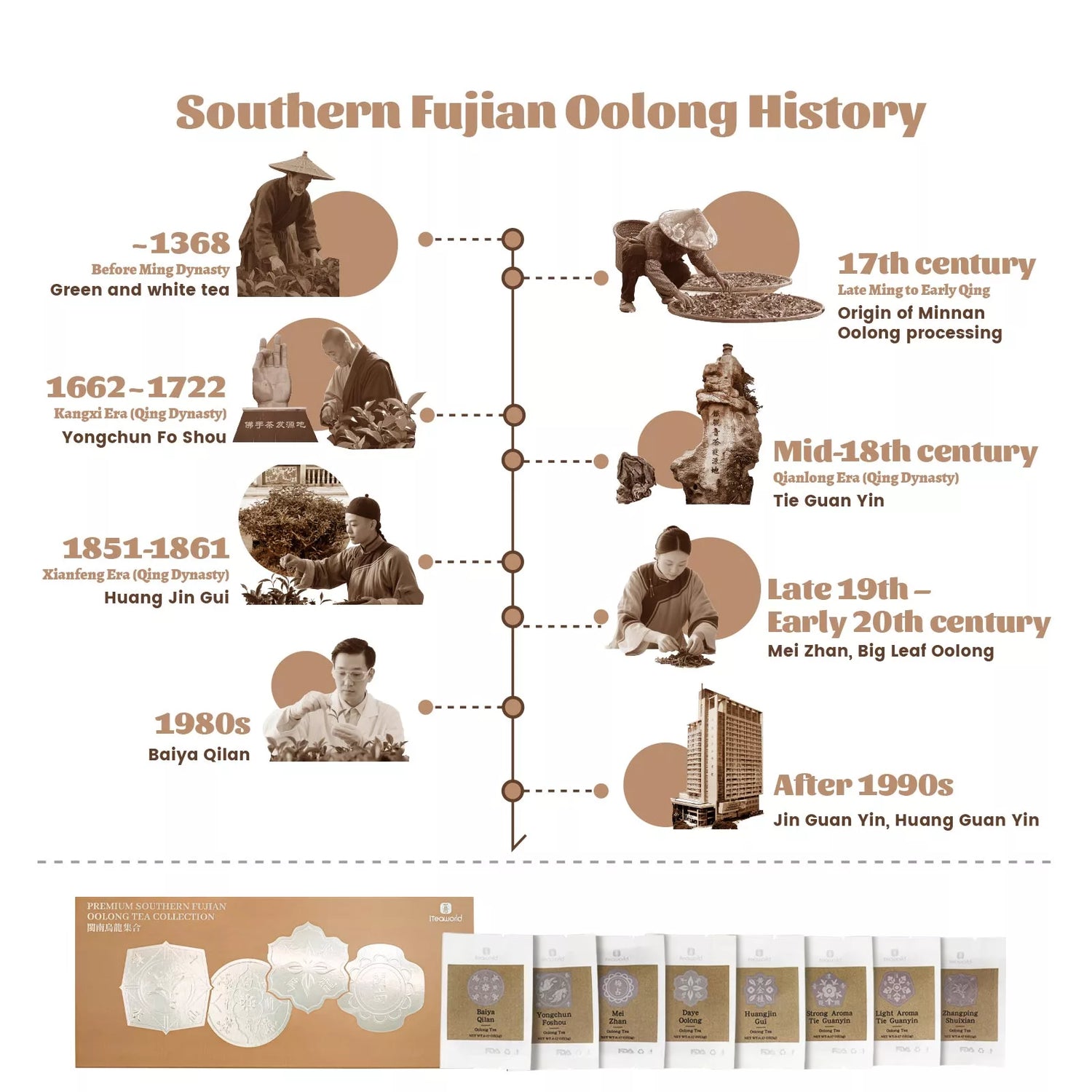

2.1 Southern Fujian Oolong — Lightly Oxidized & Diverse Flavors
Southern Fujian is the second birthplace of oolong tea, known for its wide range of styles—from light to heavy roast, and floral to fruity aromas—making it easy for beginners to notice the differences. In the late 17th century, Wuyi tea-making techniques spread to Anxi and merged with local practices, giving rise to the representative Tie Guan Yin. Originally rich-roasted and mainly for export, it shifted in the 1990s under the influence of Taiwan’s light-aroma style to the lighter, floral Tie Guan Yin popular today.
Southern Fujian oolongs are diverse: traditional roasted styles (Tie Guan Yin, Yongchun Fo Shou), fresh floral teas (Huang Jin Gui, Bai Ya Qi Lan), pressed oolongs (Zhangping Shui Xian), and caramel-scented large-leaf oolongs. We’ve curated a Southern Fujian Oolong Collection featuring 8 local varieties and famous teas, showcasing 400 years of regional flavor evolution.
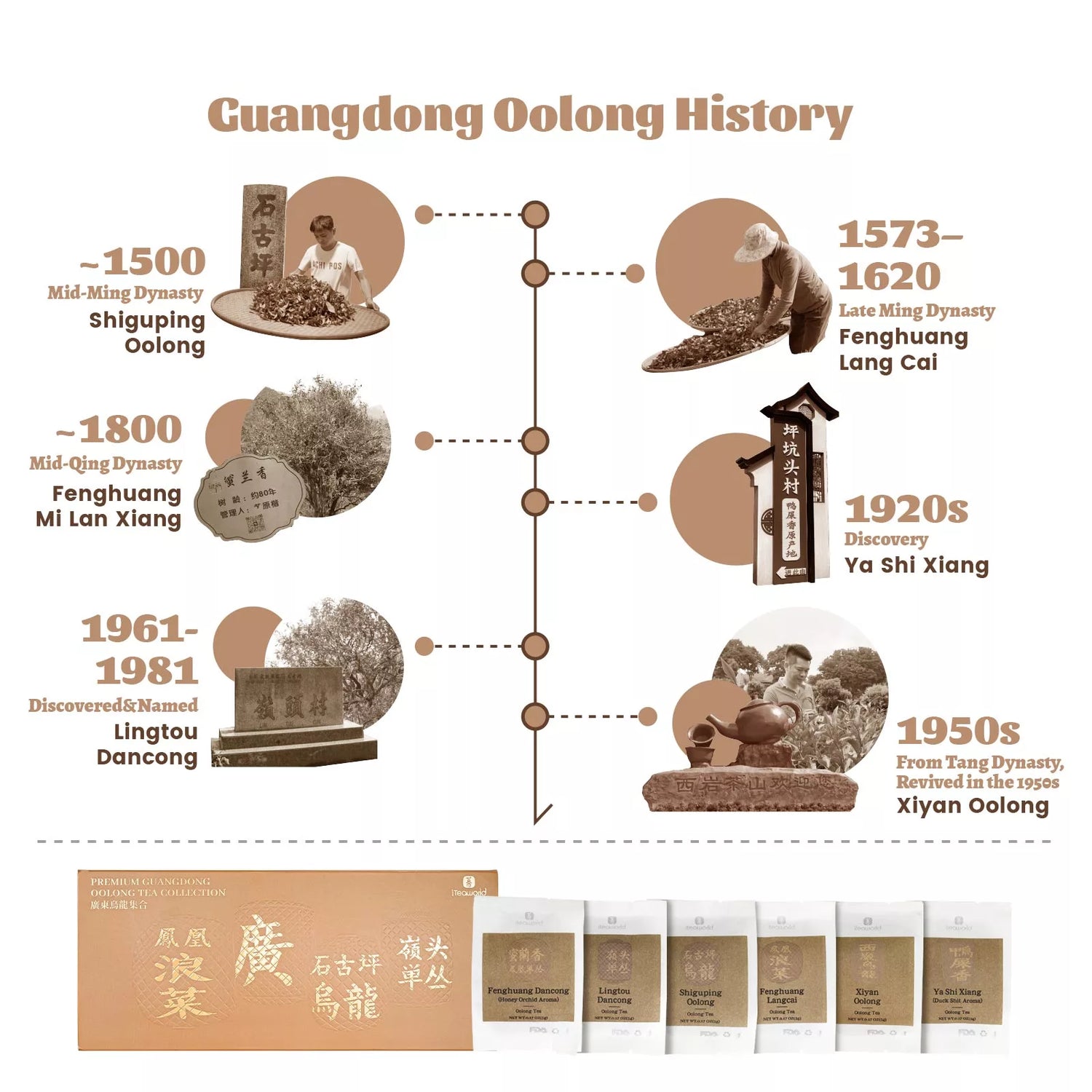

2.2 Guangdong Oolong Where Every Tree Has lts Own Aroma
In Fenghuang Mountain, Chaozhou, Oolong takes a truly unique form. Guangdong Oolong leans toward high aroma, medium oxidation, mediumroast, and is all about expressing each cultivar's signature scent.
Here, tea is picked from single trees -a tradition called Dancong where each tree can yield a distinct aroma: honey orchid, magnolia, gardenia, ginger flower, night-blooming jasmine...
Our Guangdong Oolong Collection spans the region's history-from theancient Fenghuang Shui Xian and Shiguping Oolong to modem stars like Duck Shit (Ya Shi Xiang) and Mi Lan Xiang, plus other regional classics. It's the perfect way to experience why Guangdong Oolong is one of China's most enchanting tea traditions.
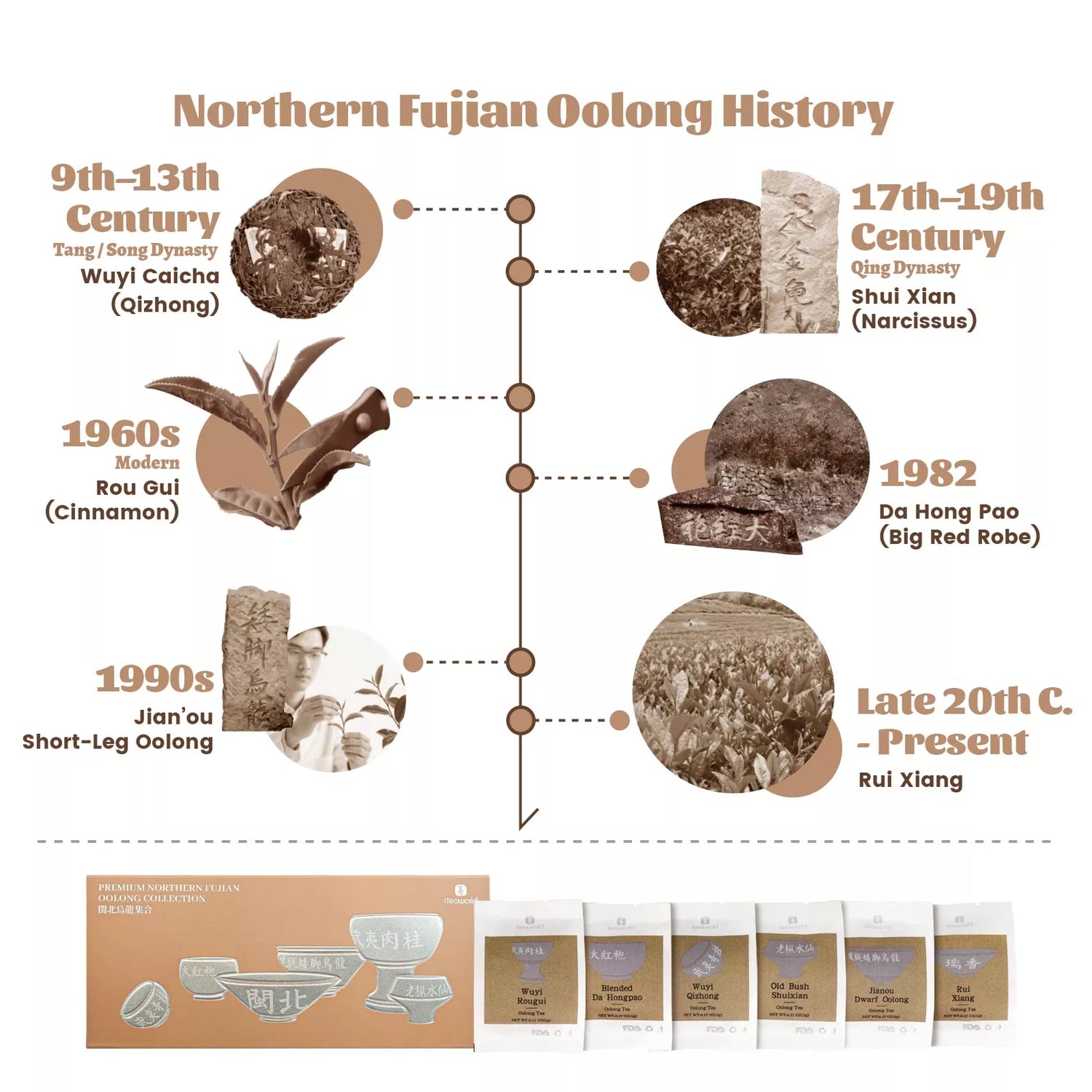

2.3 Northern Fujian Oolong — The Power of “Rock Rhyme”
Wuyi Mountain is the birthplace of oolong tea and a UNESCO World Cultural and Natural Heritage site. Its steep cliffs and dense forests create the unique “yan yun” (rock rhyme) — a layered flavor that only comes from this special terroir.
Since the 17th century, Wuyi teas evolved from green tea into semi-oxidized oolong, giving rise to today’s world-famous Wuyi Rock Tea tradition. Recognized as an Intangible Cultural Heritage, Wuyi rock tea is known for its strong roasting, rich body, and complex depth.
This collection brings together representative varieties from Northern Fujian—from teas rooted in the Song Dynasty to promising new cultivars of today. Each one reflects the region’s craftsmanship and tells its own story, offering you a true taste of Northern Fujian’s character and diversity.
Step 3 Dive Deep into Famous Teas: Wuyi Rock Tea & Fenghuang Dancong
lf you know teas like Longjing, Wuyi Rock Tea, or Jasmine Green Tea, you've probably noticed two things: their prices can vary wildly, and they can come from different regions and even different cultivars. Covering them all at once would be overwhelming, so here we'll focus on two of the most renowned oolongs - Wuyi Rock Tea and Fenghuang Dancong- and introduce you to their core varieties.
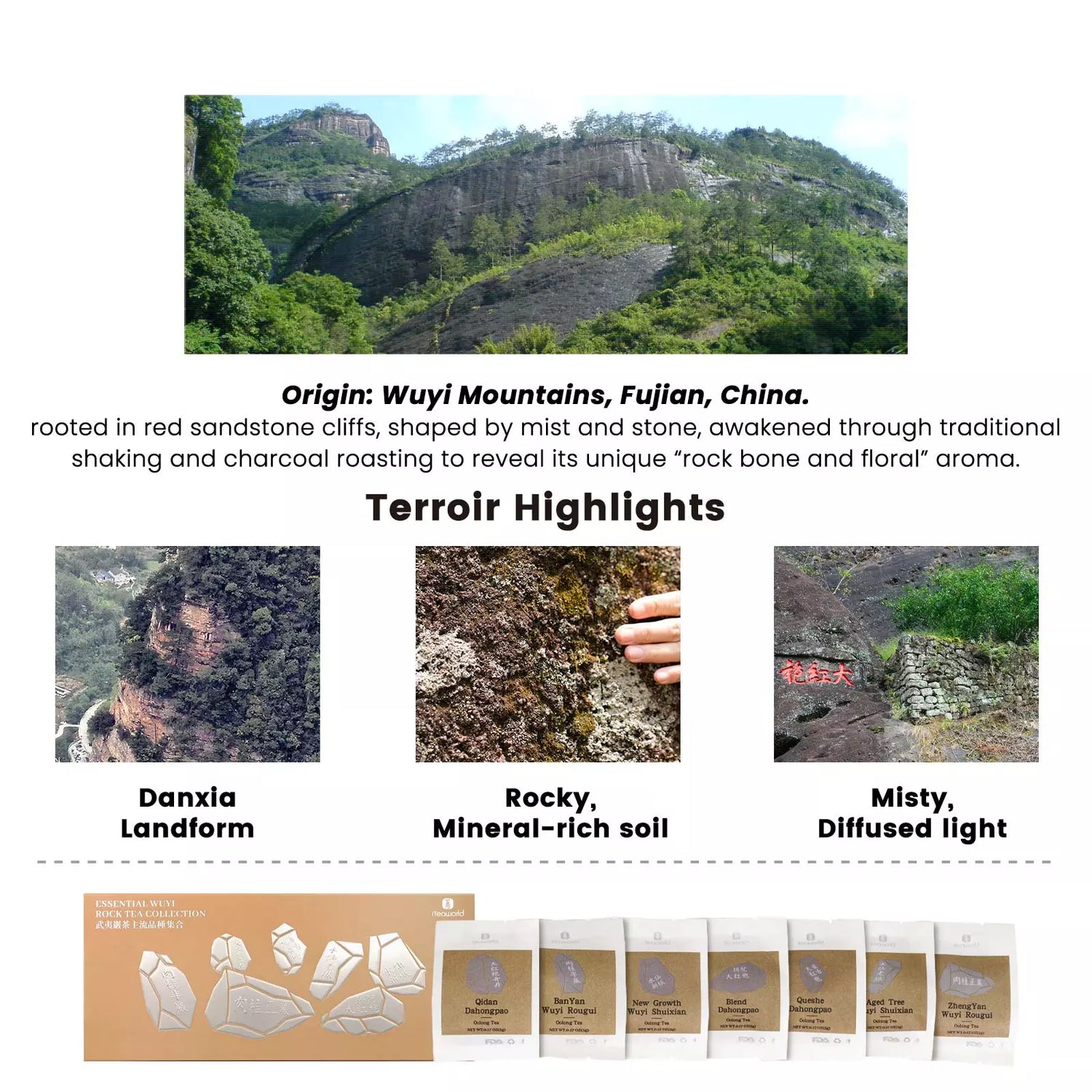

3.1 Wuyi Rock Tea: Core Varieties
lf you want one collection to start your Wuyi Rock Tea journey, this is it. We've included the three most iconic teas - Da Hong Pao, Shuixian,and Rougui -each with comparative variants to help you understand their unigue traits.
Da Hong Pao: Both pure varietals (like Qidan and Que She) and the blended commercial version.
Shuixian: Both younger bushes (xincong) and old bushes (laocong), soyou can taste the depth of “cong flavor.’
Rougui: From both “half-rock” and “true-rock” terroirs, showing off Rougui's signature spiced intensity.
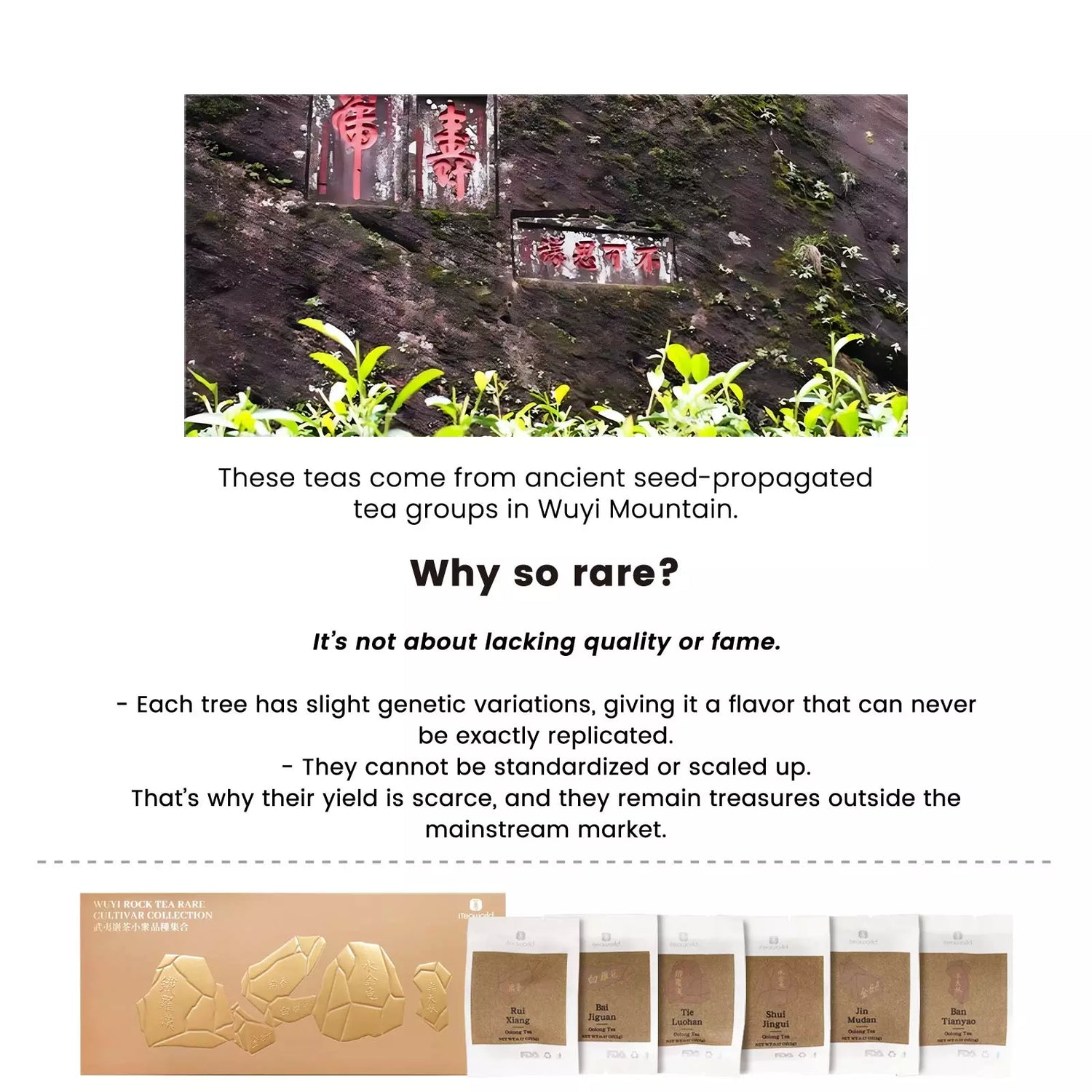

3.2 Wuyi Rock Tea Rare Varieties Collection
If you’ve already explored classic Wuyi teas like Da Hong Pao, Rou Gui, and Shui Xian, this set invites you to go deeper into the rare and traditional side of Wuyi rock tea.
It includes unique varieties such as Tie Luo Han, Bai Ji Guan, Shui Jin Gui, Ban Tian Yao, Rui Xiang, and Jin Mu Dan—all originating from centuries-old tea bushes in the core Wuyi mountains. These teas preserve the ancient genes of rock tea and offer flavors you won’t find in the mainstream classics.
Highlights of their flavor profiles:
- Bai Ji Guan – sweet and refreshing, with notes of corn silk
- Tie Luo Han – rich herbal aroma, reminiscent of traditional Chinese medicine
- Ban Tian Yao – exotic blend of gardenia, milk, and honeyed floral notes
- Rui Xiang – highly penetrating fragrance, treasured as a “secret weapon” in premium blends
With very limited production (Ban Tian Yao yields less than 100 pounds per year), these teas are sought after by seasoned tea lovers and collectors. This collection lets you experience the diversity of Wuyi craftsmanship and terroir through its rarest cultivars.
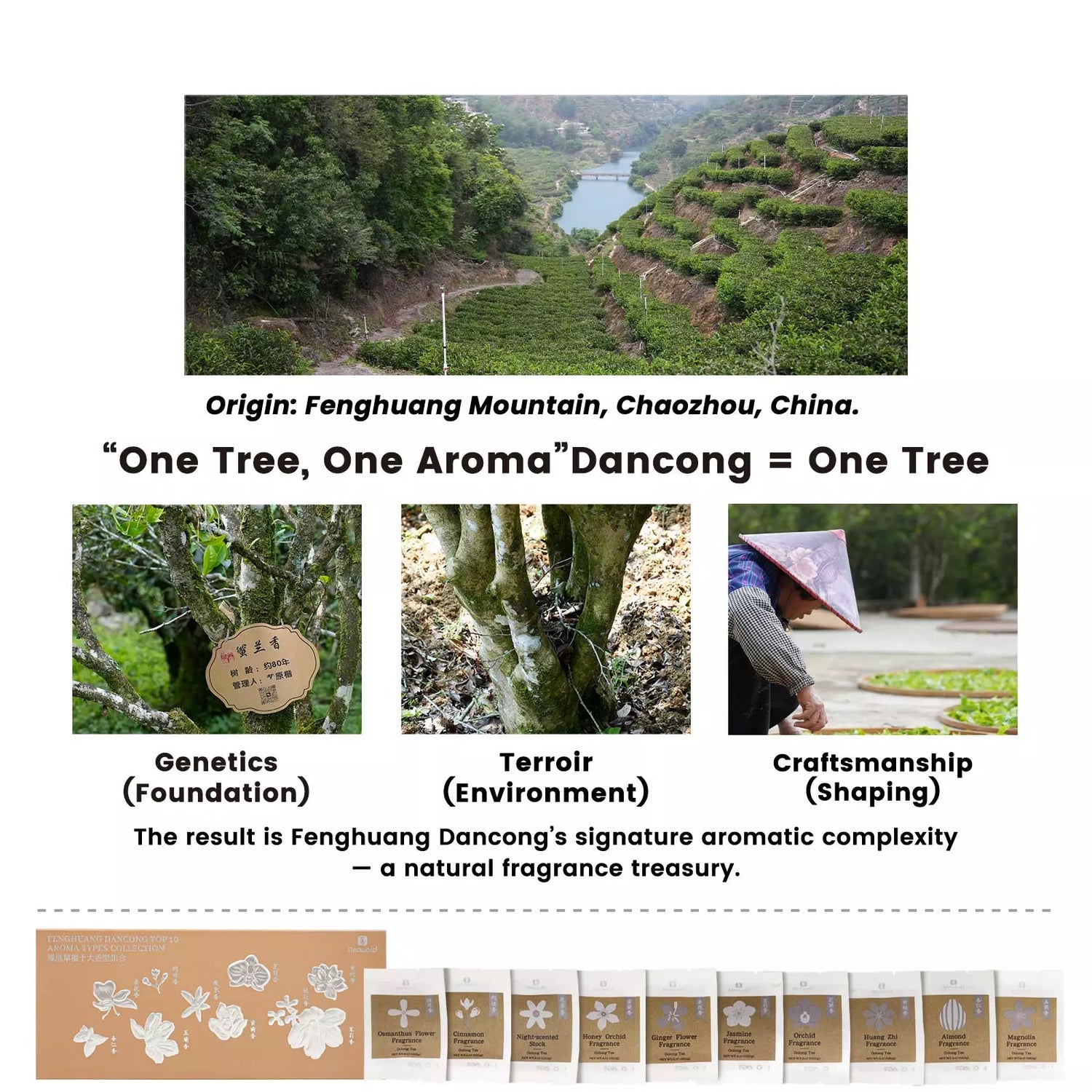

3.3 Fenghuang DancongTen Signature Aromas collection
lf you've tried Dancong before, chances are it was either Mi Lan Xiang(Honey Orchid Aroma) or Ya Shi Xiang (Duck Shit Aroma). To truly appreciate the full range of its naturally occurring fragrances, you can explore this Ten Aromas Collection.
Every tea in this set comes from the core Dancong growing areain Fenghuang Town, at mid-altitude or higher -where coolertemperatures and richer soils bring out the most intense and refned aromas. Some of the rarer aroma types are extremely hard to find, with very limited annual production.
Step 4 Side-by-Side Comparisons: Understanding Oolong on a Deeper Level
Once you've built a solid foundation, you might start wondering: What exactly shapes the flavor of oolong tea?Is high-altitude tea really better than low-altitude tea?How does a spring-harvest oolong differ from an autumn-harvest one?Does a century-old tea tree produce a richer tea than a young one?To answer these questions, we created our “Variable-Control Exploration Series”.This series lets you compare teas where only one factor changes at a time - so you can isolate and taste the impact of each variable.
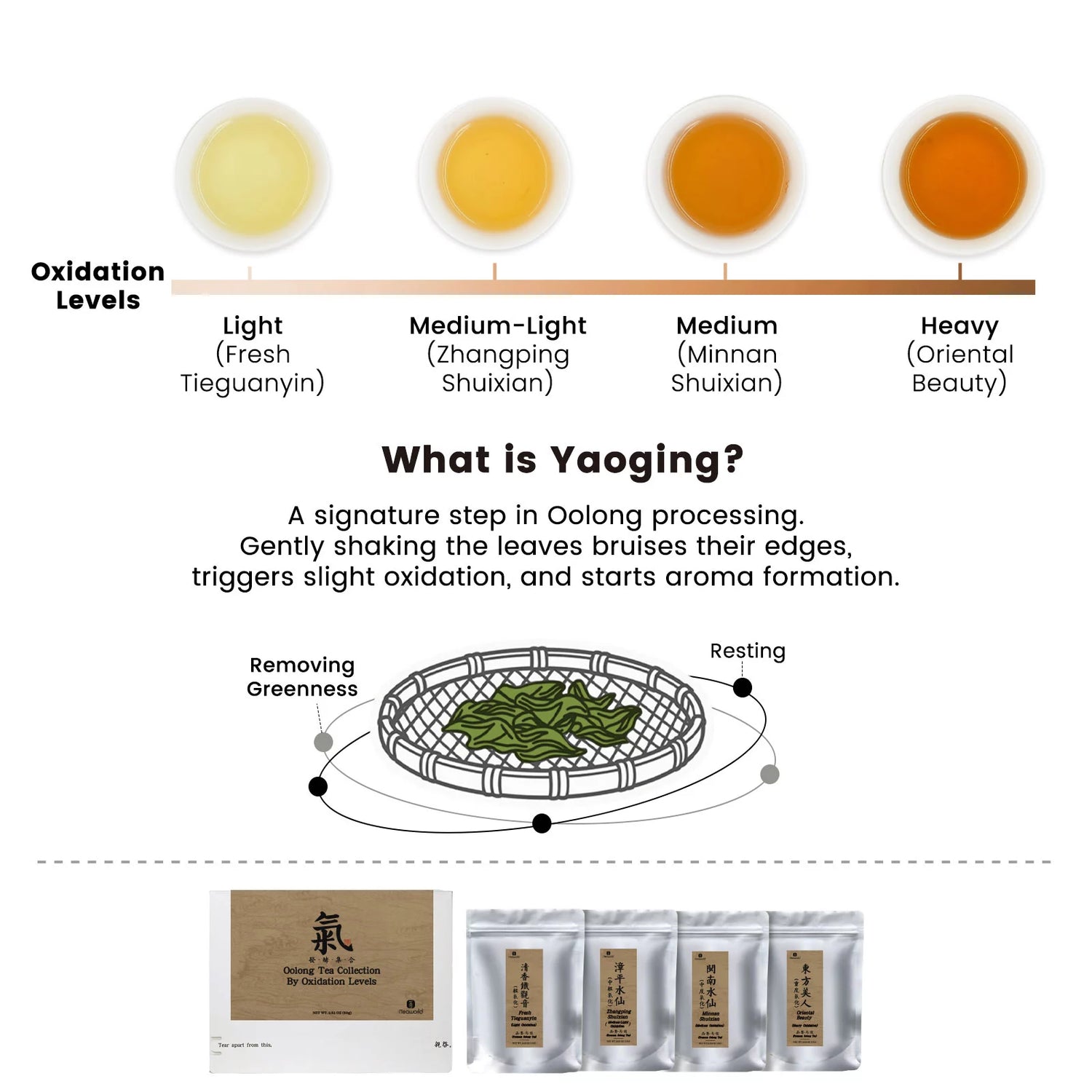

What’s the Difference Between Oolong Teas at Different Oxidation Levels?
4.1 Oolong Tea Collection by Oxidation Levels
Oolong is a semi-oxidized tea, with levels ranging from 10% to 70%. Oxidation mainly shapes the aroma and taste:
- Light oxidation (10–25%): Fresh, floral, and fruity notes. Examples: Wenshan Baozhong, light Tie Guan Yin.
- Moderate oxidation (25–50%): Floral mixed with honey, fruit, or roasted aromas. Balanced and complex. Examples: Phoenix Dancong, rich Tie Guan Yin.
- Heavy oxidation (50–70%): Ripe fruit, roasted, or caramel-like aromas, with a smooth, mellow taste. Examples: Da Hong Pao, Wuyi Rou Gui, Oriental Beauty.
Our Oolong Collection by Oxidation Levels features four famous teas, all lightly roasted but with different oxidation levels, letting you experience how oxidation transforms flavor.
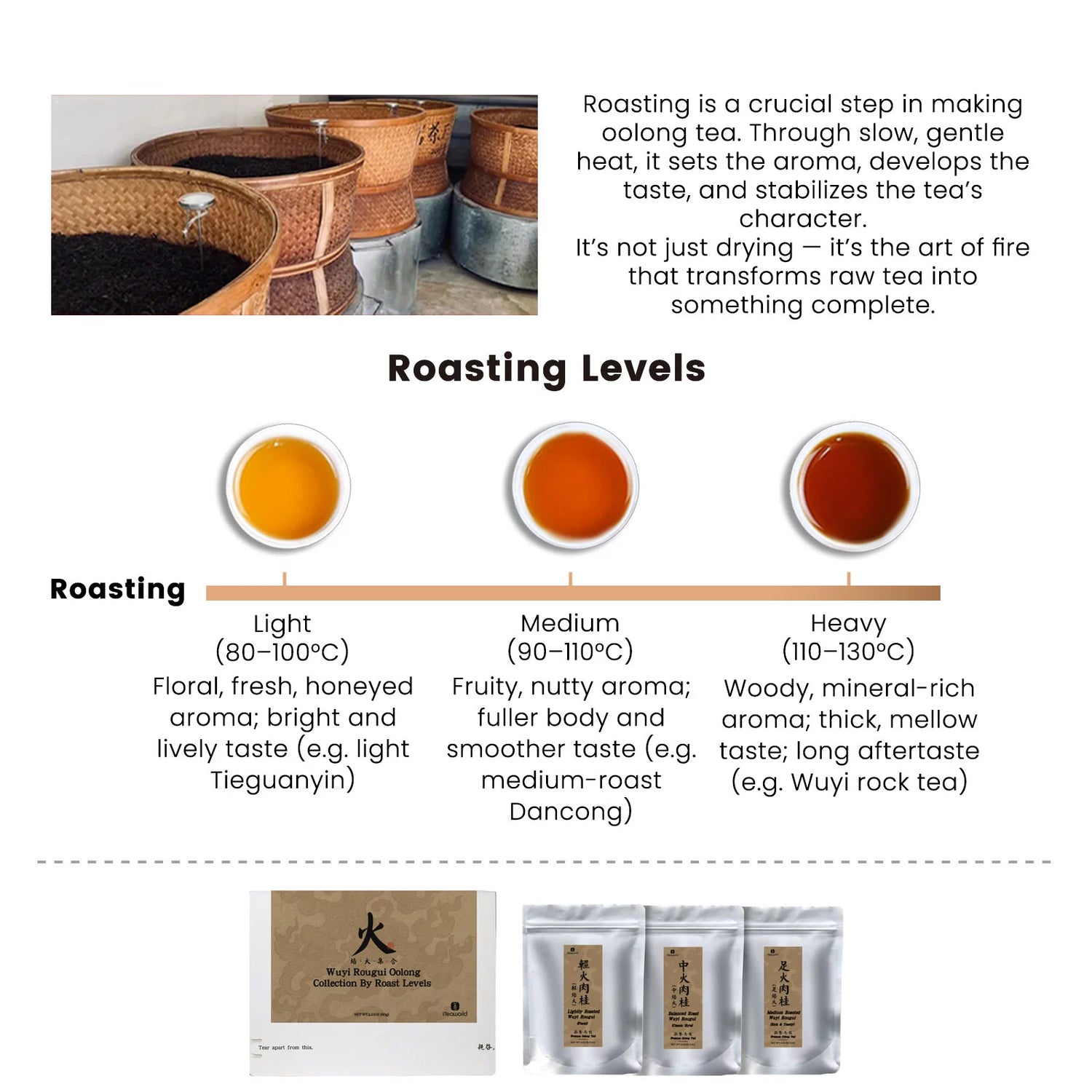

Does Heavily Roasted Oolong Always Taste Smoky?
4.2 Wuyi Rougui Oolong Collection by Rosted Levels
Roasting oolong tea is not just for flavor—it also reduces moisture, removes unwanted notes, and lowers caffeine. The roast level often works with oxidation:
Light roast keeps the tea fresh and floral.
Heavy roast makes it fuller, with toasty or charcoal-like notes.
If a lightly oxidized tea is roasted too heavily, the strong roasted taste may cover its natural flavor.
Our Wuyi Rougui Oolong Collection by Roast Levels includes teas from the same region and master, but with different roasting levels—so you can explore how roasting shapes the taste.
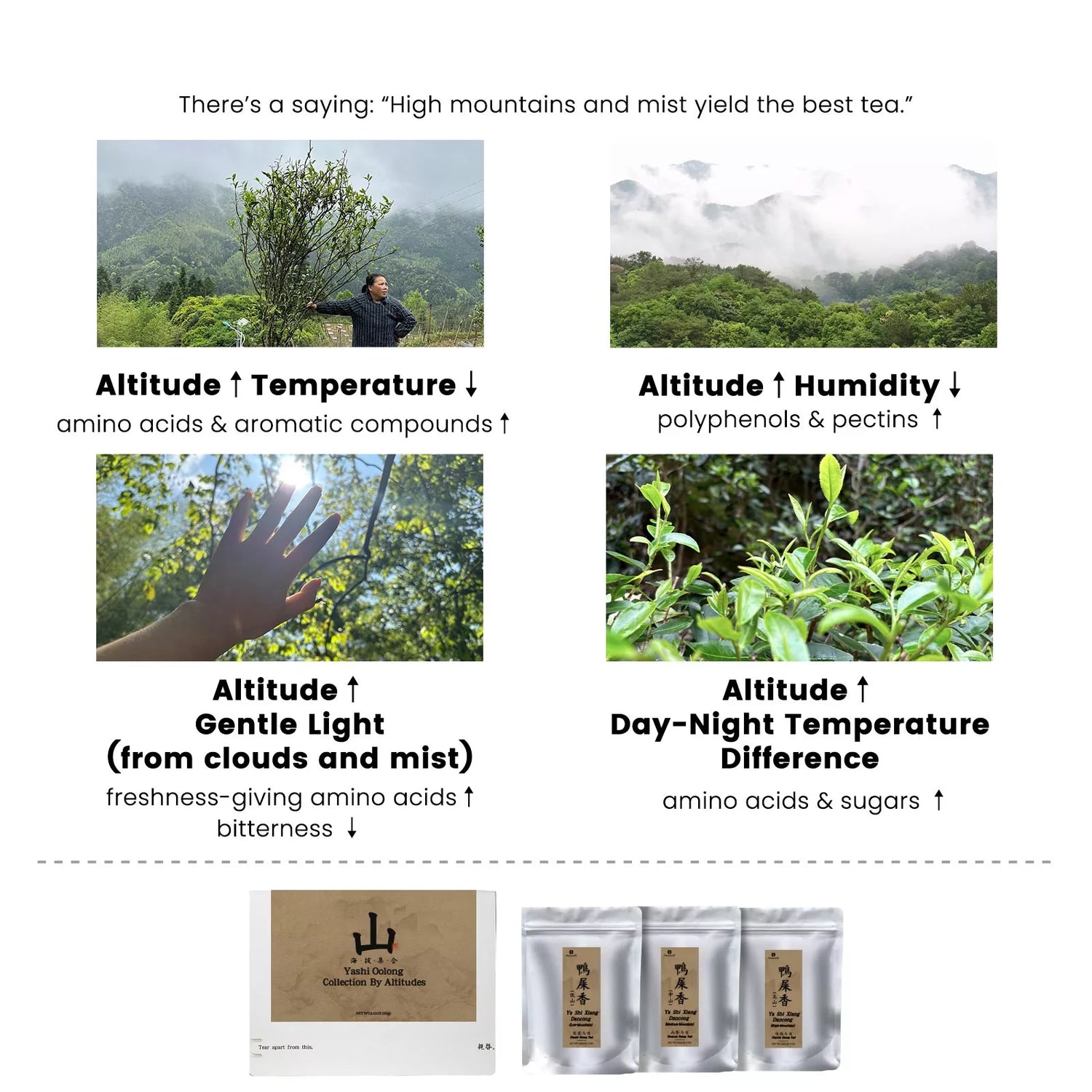

Is High-Altitude Tea Worth It? This Product Might Give You the Answer
4.3 Yashixiang Oolong Collection by Altitude
High-altitude regions have cooler climates, larger day–night temperature differences, and frequent fog. These conditions slow down leaf growth, leading to higher theanine levels and richer compounds—resulting in tea that is sweeter, fresher, and more aromatic. Such teas are usually lightly to moderately oxidized and roasted. Examples: Taiwan High Mountain Tea, Phoenix Dancong.
By contrast, low-altitude teas often contain more polyphenols, have weaker aromas, and are less enduring over multiple infusions.
Our Ya Shi Xiang Dan Cong Oolong Collection by Altitudes includes three teas from the same region and crafted by the same master, but grown at different elevations—allowing you to directly compare how altitude shapes the flavor.
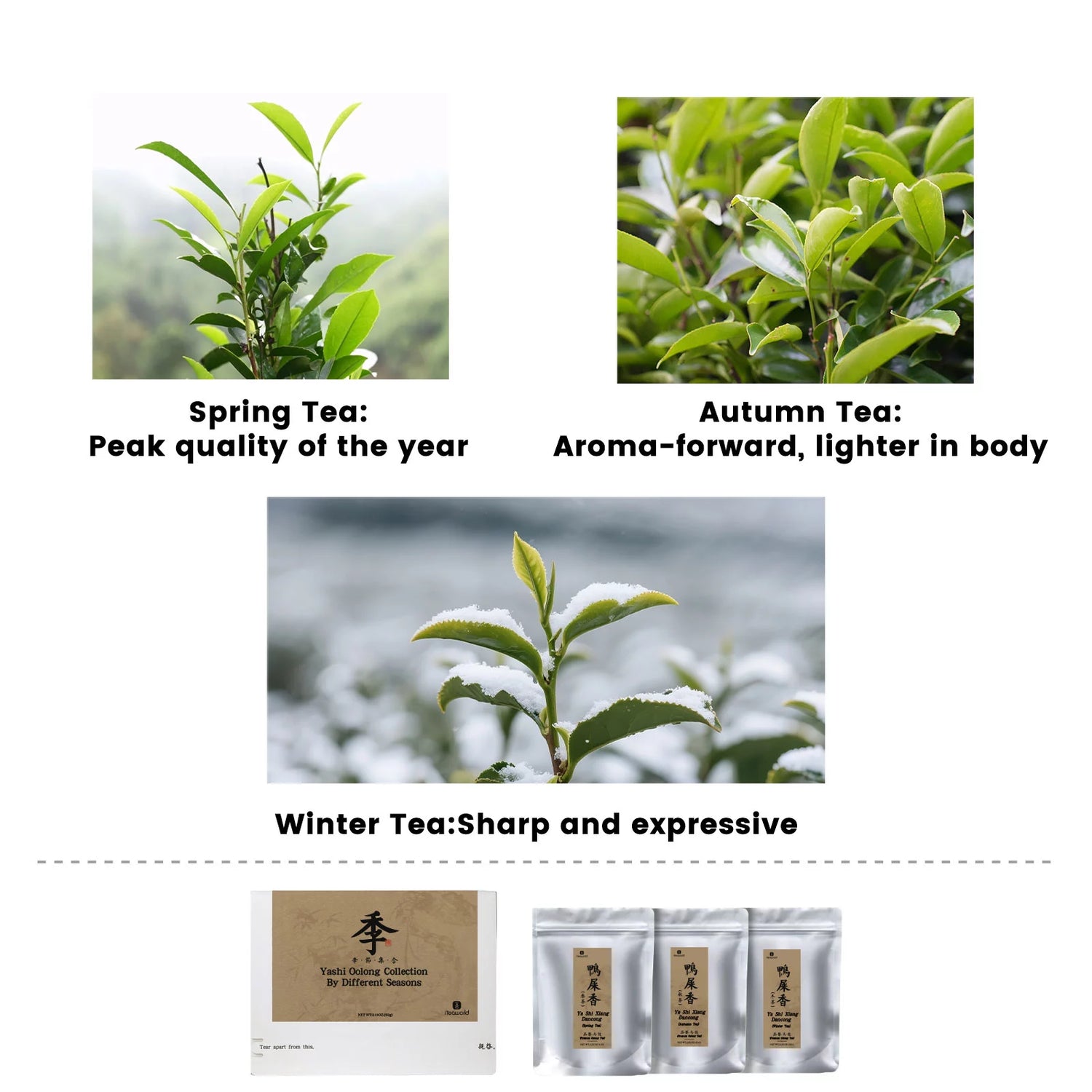

Is spring Tea the Best for Oolong? Just Like Green Tea?
4.4 Yashixiang Oolong Collection by Different Seasons
Oolong can be harvested in spring, summer, autumn, and winter. Wuyi Rock Tea, however, is picked only in spring.
Spring teas grow slowly, rich in amino acids and polyphenols, giving a sweet and full taste—but frequent rain may weaken the aroma.
Autumn and winter teas often have a stronger or crisper fragrance.
Summer teas are usually used for milk tea and rarely sold as loose leaf.
Our Ya Shi Xiang Dan Cong Oolong Collection by Seasons features three teas from the same village and master, but harvested in different seasons. Each is crafted with oxidation and roasting levels tailored to the leaf—like winter tea, with thick leaves and a cool aroma, made using light oxidation and roasting. Taste them side by side to explore seasonal differences.
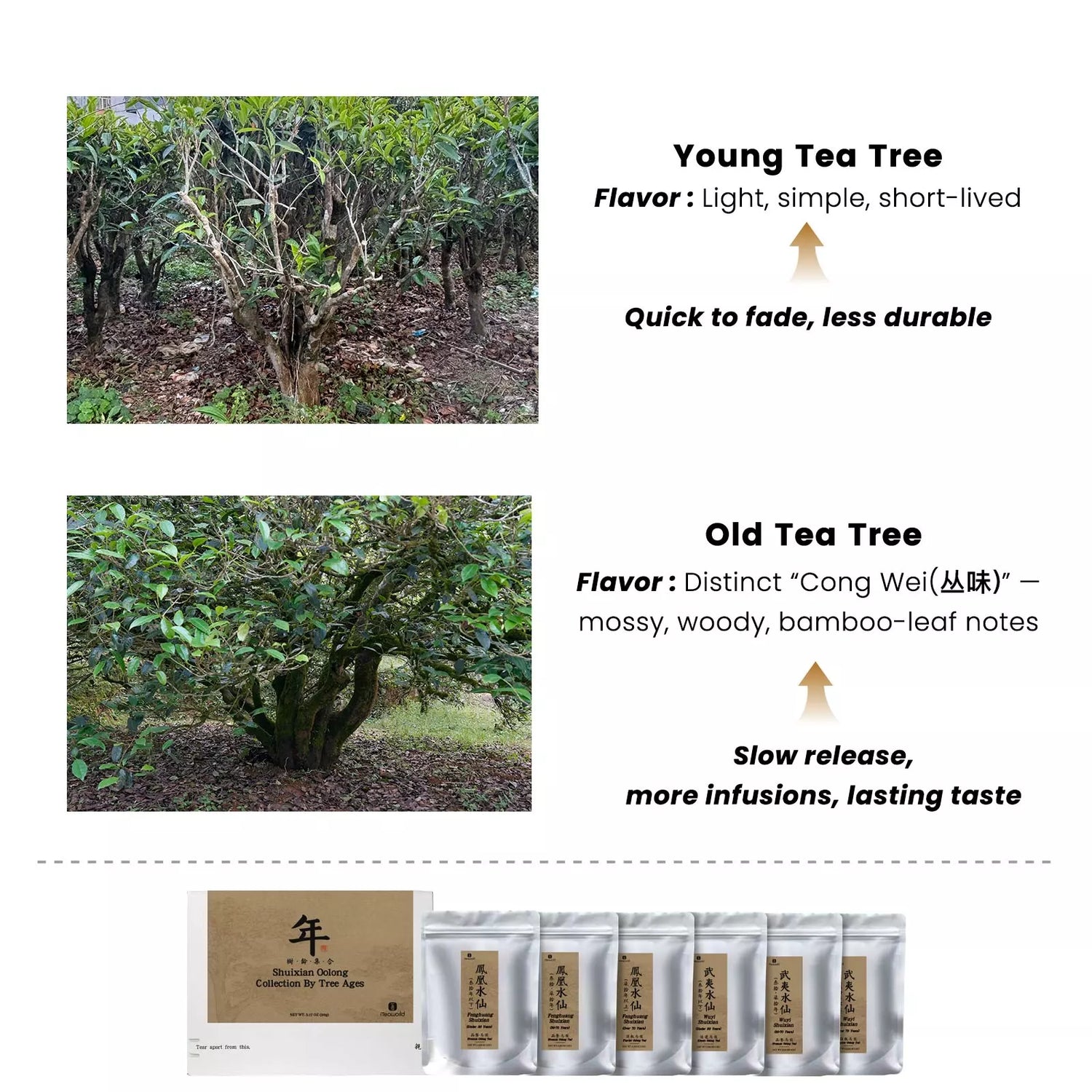

You Might Not Like Century-Old Tree Tea
4.5 Shuixian Oolong Collection by Tree Ages
Both Pu’er and Oolong often highlight tree age. Older trees are rarer and more expensive, but not always preferred by everyone.
- Younger trees: higher amino acids → sweeter taste, stronger varietal aroma, but less complex.
- Older trees: richer in polyphenols, fiber, and minerals → deeper sweetness, longer aftertaste, more durable for multiple infusions.
Tree age is especially significant in Shuixian Oolong (e.g., Phoenix Shuixian, Wuyi Shuixian, Minbei Shuixian).
Our Shuixian Oolong Collection by Tree Ages features Phoenix Shuixian and Wuyi Shuixian from the same region and crafted with the same process, but from trees of different ages—so you can explore how age shapes the flavor.
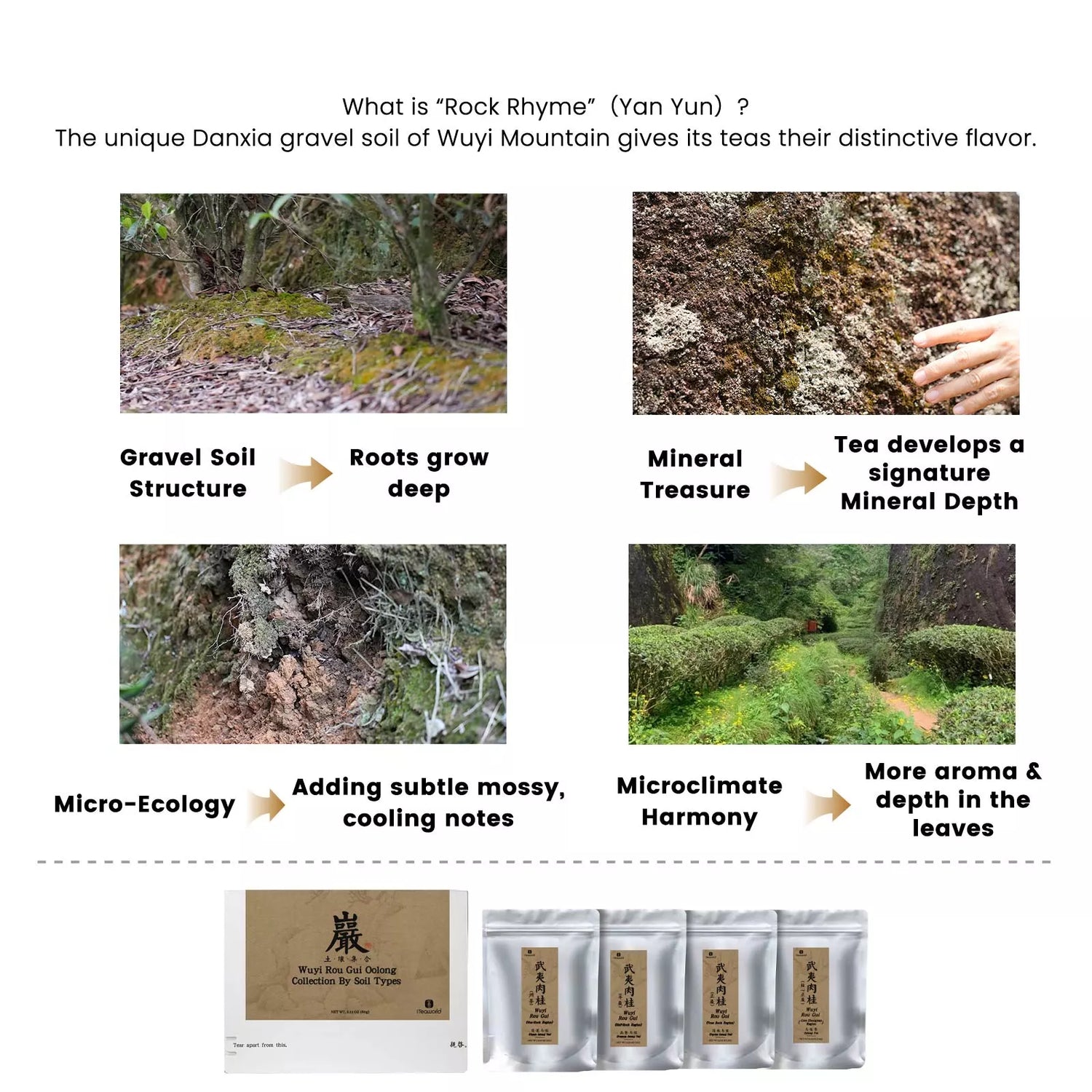

How Does Soil shape the Taste of Wuyi Rock Tea?
4.6 Wuyi Rougui Oolong Collection by Soil Types
Over 1,200 years ago, Lu Yu wrote in The Classic of Tea:
“The finest tea grows on rocky soil, medium-quality tea on gravelly soil, and lower-quality tea on yellow soil.”
Tea trees thrive in well-drained, mineral-rich soil that retains moisture but avoids waterlogging.
Rocky & gravelly soils → best balance of moisture and acidity, producing the signature “rock rhyme” (yan yun) and layered flavors of Wuyi Rock Tea.
Yellow soil → simpler taste, lacking the distinctive rocky note. (This type of tea is often called Zhou Cha.)
Our Wuyi Rou Gui Oolong Collection by Soils features Rou Gui from four different soil environments—from the most prized Core Zhengyan area to the lighter-flavored Zhou Cha—so you can explore how soil shapes the taste.
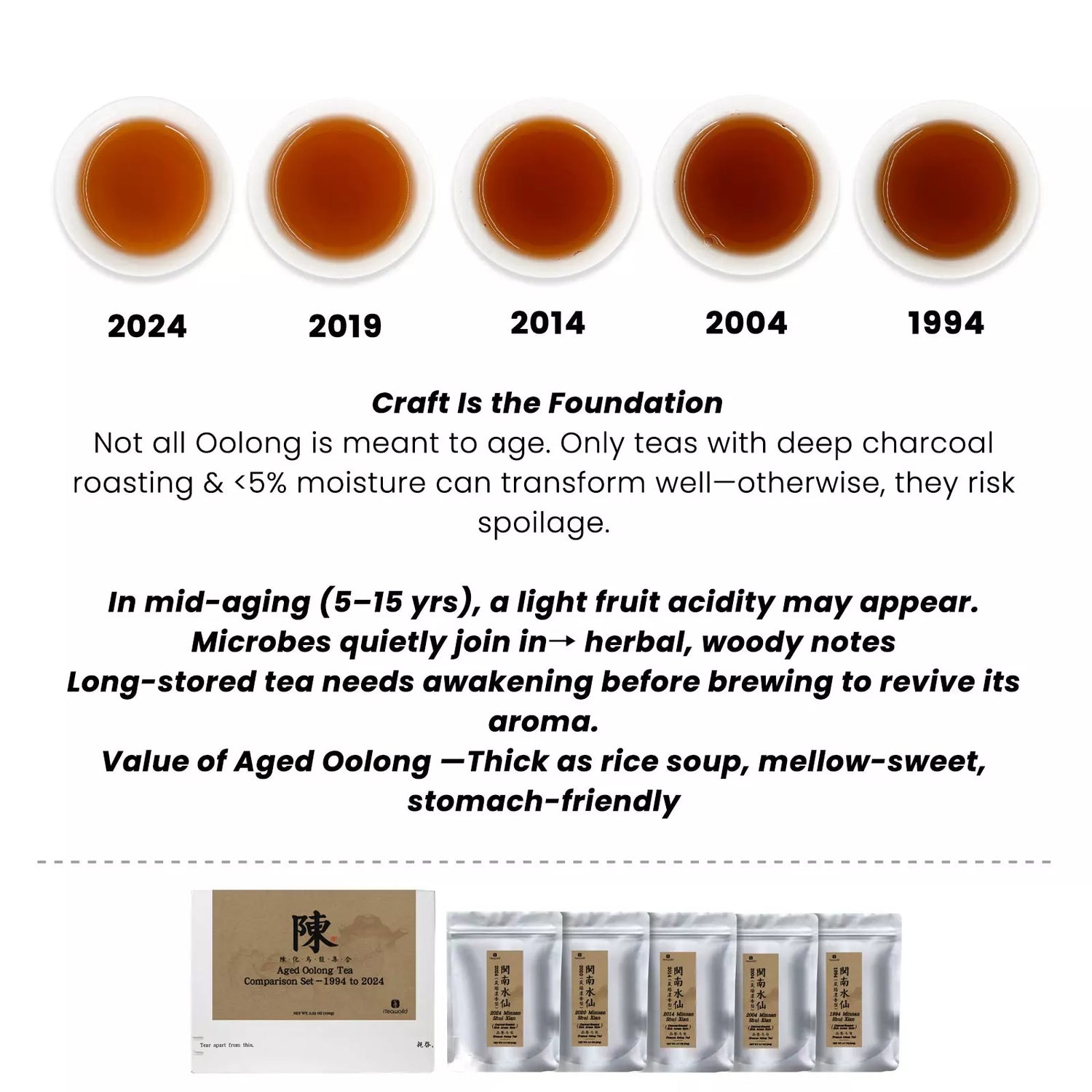

What Really changes in Aged Oolong?
4.7 Aged Oolong Tea Comparison Set—1994-2024
To fnd out, we gathered fve Mingnan Shuixian Oolongs (traditionalcharcoal-roasted,strong-aroma style)from Yongchun Beikeng Overseas Chinese Tea Factory, each from a different year:1994,2004,2014,2020,and 2024.
Over time, aged Oolong transforms: Aroma shifts from fresh floral and fruity to woody and medicinal.Taste moves from bold and astringent to mellow, smooth, and sweet.The tea liquor evolves from crisp to thick and velvety. Bitterness fades, sweetness deepens, and aged fragrance builds uplike fne wine maturing into something deep and lingering.
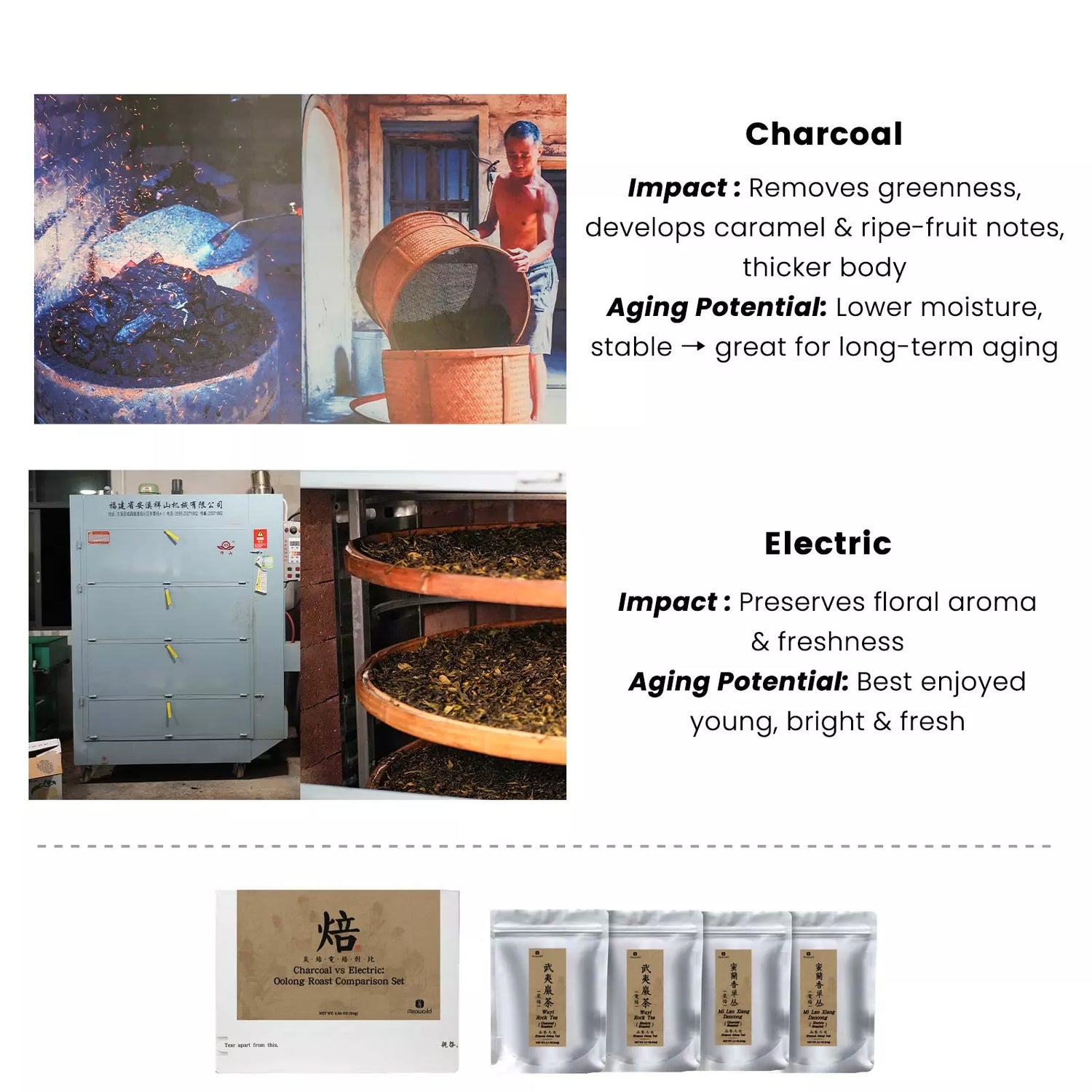

Charcoal vs. Electric Roasting – Two Ways to Shape Oolong’s Flavor
4.8 Charcoal vs. Electric:Oolong Roast Comparison Set
Charcoal Roasting
The traditional method uses longan or lychee wood charcoal for slow, low-temperature roasting. This process creates a signature charcoal aroma with honeyed sweetness and mineral depth, leaving the leaves glossy and fragrant. The tea offers long-lasting infusions and excellent aging potential, making it ideal for Wuyi Rock Tea and Phoenix Dancong, where it adds caramel-like depth and silky texture.
Electric Roasting
Modern roasting uses heating elements and hot air with precise temperature control (±5°C). It is efficient and stable, preserving bright floral and fruity notes in lightly oxidized Oolongs. The result is a vibrant aroma and refreshing liquor, best enjoyed within one to two years.
Our Collection
To highlight the contrast, we selected teas from the same master, crafted in both charcoal- and electric-roasted versions, so you can directly experience how roasting methods shape flavor.
